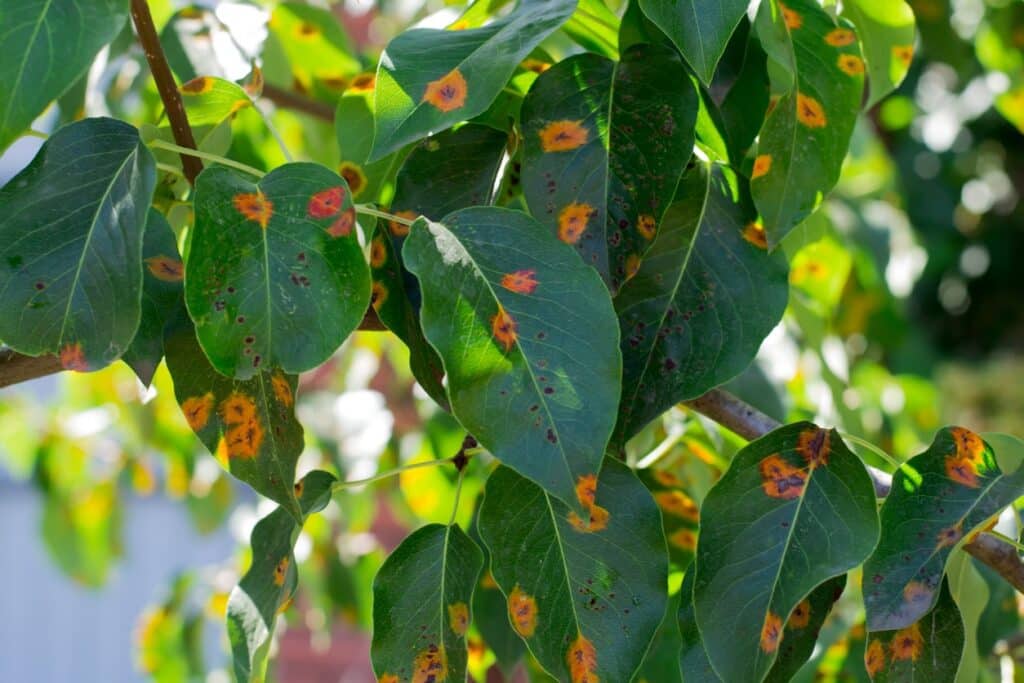Every fruit-tree owner should understand how to spot the signs of a diseased fruit tree. It is not difficult, but new pests and diseases are always emerging, so checking on your trees for common plant health problems is essential. Here is a guide to common diseases that plague fruit trees.
Brown Rot
This disease often affects apples, pears, or crabapples. Look for brown spots on the upper parts of the fruit and also on leaf petioles and branches. Leaf petioles will be affected first, but it can quickly progress to fruit rot and premature fruit drop.
Canker on Branches
Cankers are sunken lesions that form on stems and branches due to fungal infections such as apple scabs and leaf spot diseases. They can cause branch dieback if left untreated for too long. This plant disease often affects apples and crabapples. When the disease occurs in other fruit trees such as plums and cherries, it can also damage the fruit. Brown spots appear on the upper part of these smaller, softer fruits and also on leaves, causing oozing that creates a sticky pitch visible across the infected area.
Poor Fruit Production
Many pests can affect a fruit tree. If you notice that your trees yield less than normal or if the fruit is small and misshapen, this could indicate a pest infestation. Also, keep an eye out for bare branches covered in green, black, or brown spots, as this could indicate aphids.
Wilted Foliage
Wilted leaves indicate disease in your tree. Look for yellowing leaves and circular brown spots on the trunk, branches, and lower leaves. This could be due to nutrient deficiencies, pest infestations, water stress and other environmental factors. A tree specialist can help you identify the cause.
Bark Cracking or Peeling
Cracks in the bark of a tree can signal infection from fungi or bacteria that have infiltrated the woody tissue of the tree trunk below ground level. Look for brown or grey patches on the bark and lichen that have spread across the tree. If you think your tree has mildew or fungal problems, it’s best to have it checked over as soon as possible
Lack of New Buds
A healthy fruit tree should have plenty of spring buds, with new growth coming on strong throughout the year. If you’re not seeing new growth and buds, it could indicate disease. Many diseases will kill one or more branches in your tree, so there will be a gap in the foliage.
It’s important to take the time to inspect your fruit trees and make sure you deal with any disease or other problems as soon as possible. If you are a resident of Santa Barbara, CA and you notice any of these symptoms, contact Economy Tree, Inc. for complete tree services. We can identify and treat the problem. We also offer tree removal services if the tree is too far gone.



